Mushrooms
Media
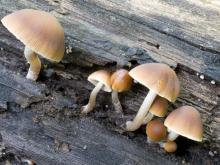
Species Types
Scientific Name
Various species of confusingly similar mushrooms
Description
Like the LGBs (“little gray birds”) of the birdwatchers, this is a catchall category. It includes all the small to medium-sized, hard-to-identify brownish mushroom with spores of all colors. There are many hundreds of species that fit this description!
Media
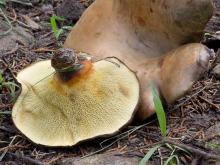
Species Types
Scientific Name
Boletinellus merulioides
Description
The ash tree bolete is a pored mushroom with a brownish, wavy cap, an off-center stalk, and clearly defined pores. It grows scattered on the ground near ash trees.
Media
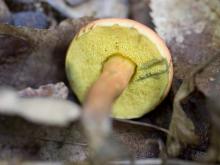
Species Types
Scientific Name
Boletus bicolor
Description
The two-colored bolete has a rose red cap that is sometimes yellowish toward the margin. The underside has tiny yellow pores, and the stalk is reddish yellow; all parts slowly bruise blue. Grows singly or in groups of up to several, on the ground under oaks.
Media

Species Types
Scientific Name
Boletus frostii
Description
Frost’s bolete has a blood red cap with red pores and a red, webbed stalk; all parts bruise blue. It grows scattered on the ground in oak woods.
Media
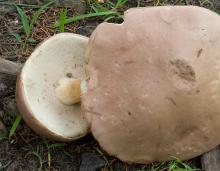
Species Types
Scientific Name
Boletus pallidus
Description
The pallid bolete has a pale cream to buff cap and stalk and pale cream-yellow pores. It grows singly or in groups of up to several, on the ground in oak woods.
Media
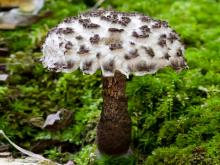
Species Types
Scientific Name
Strobilomyces floccopus
Description
The old man of the woods has a grayish black, shaggy cap with grayish pores and a grayish black, shaggy stalk. It usually grows singly, on the ground in mixed hardwood forests.
Media
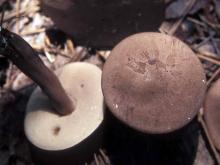
Species Types
Scientific Name
Tylopilus plumbeoviolaceus
Description
The violet-gray bolete has a large, violet-gray cap with cream-pink pores, and a violet stalk that is sometimes webbed. It grows scattered on the ground in mixed woods.
Media

Species Types
Scientific Name
Daedaleopsis confragosa (Daedalea confragosa)
Description
The thin-maze flat polypore is a grayish brown bracket fungus with a zoned top and a furrowed, mazelike underside. It grows singly or in small, layered clusters on dead wood or in wounds of living trees.
Media
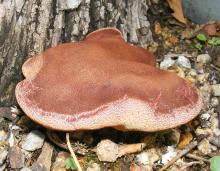
Species Types
Scientific Name
Fistulina hepatica
Description
The beefsteak polypore is a thick, semicircular, reddish or rusty, gelatinous bracket with a pinkish yellow underside. It grows at the base of living oaks and on stumps.
Media
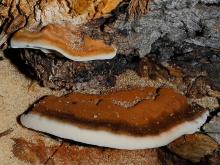
Species Types
Scientific Name
Ischnoderma resinosum
Description
The resinous polypore is a large, thick, velvety, brownish bracket fungus with a thick margin and whitish pores. It grows on logs and stumps of deciduous trees.
See Also



Media

Species Types
Scientific Name
Monotropa hypopitys
Description
Pinesap is a plant that puts the "wild" in wildflower! It lacks chlorophyll, so its roots connect to fungi underground and absorb nutrients from the fungi.
Media

Species Types
Scientific Name
Cladophora, Pithophora, and Spirogyra spp., and others
Description
Filamentous green algae forms green, cottony masses that are free-floating or attached to rocks, debris, or other plants.
Media

Species Types
Scientific Name
Monotropa uniflora
Description
Indian pipe lacks chlorophyll, so it is white, not green. Below ground, its roots join with fungi that connect to tree roots. This plant, then, takes nourishment indirectly from the trees.
About Mushrooms in Missouri
Mushrooms are a lot like plants, but they lack chlorophyll and have to take nutrients from other materials. Mushrooms are neither plants nor animals. They are in a different kingdom — the fungi. Fungi include the familiar mushroom-forming species, plus the yeasts, molds, smuts, and rusts.
Always be cautious when eating edible mushrooms. Be absolutely sure of the ID, and only eat a small amount the first time you try it to avoid a reaction..





















